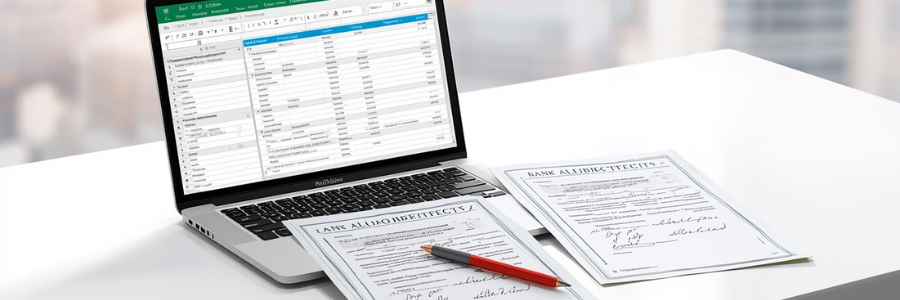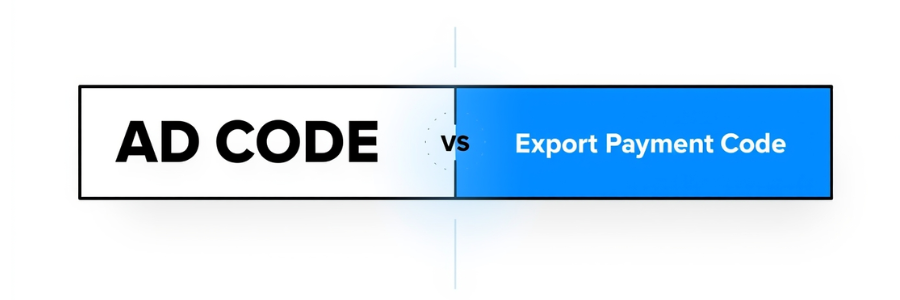AD Code Registration with the ICEGATE Portal
For the customs clearance at the ports, the businesses that are associated with export-import are required to obtain the mandatory AD code. The authorized dealer code facilitates seamless export transactions. Another use of the 14-digit code is to generate the ‘shipping bill’ on the Indian Customs Electronic Gateway (ICEGATE). Beyond these functions, the AD code letters allow the exporters to utilize the export benefits like duty drawback and various others. After the code approval by the banks, the second step for businesses is to register it on ICEGATE. How did it happen? What’s the process? Let’s break down the blog to know the importance of AD code registration as well as the process through the ICEGATE portal, including the role of IFSC.
What is ICEGATE AD Code Registration?
The business that deals with export-import is required to register the AD code on the ICEGATE portal. It is a mandatory requirement for all businesses that deal internationally. Meanwhile, the registration helps to interlink the current exporter-importers’ bank accounts with the ICEGATE portal. The AD code, which contains the 14-digit numeric code, is assigned by the Reserve Bank of India. This digit is important to identify the exporter’s foreign transactions history. Here are the details of why registration of the AD code is mandatory on the ICEGATE portal:
- For customs clearance, exporters are required to first generate the shipping bill on the portal. Having the invalid AD code restricts the businesses from creating the shipping bill.
- Through the link of the current bank account with the portal, the direct credit of various government benefits is enabled. The benefits, the drawbacks, IGST refunds, and other exemptions will be directly credited to exporter accounts.
- For smooth international transactions, it links the ICE code number with the current bank account, the customs department, etc.
Latest Update Related to AD Code Registration
The exporters are no longer required to register the AD code separately at each port. Now, the registration process is turned into a ‘single registration.’ A single registration against an ICE at one port is sufficient. Upon registration, the code will be available for use at all customs locations under the same IEC number.
However, here is the catch!
Unlike the AD code register, which is required to register at a single port via ICEGATE, registration for the IFSC code is mandatory. It is required to ensure the timely receipt of duty refunds and IGST credit.
How does the IFSC Code Link to AD Registration?
IFSC stands for ‘Indian Financial System Code.’ The code typically contains a 12-character alphanumeric code. It basically identifies each bank branch in India. An IFSC code is advantageous for transferring funds to businesses. Furthermore, the first four digits of this code represent the name of the bank. After one zero, the last six digits represent the specific branch name. For exporters and importers, the 11-digit numeric code acts as a digital address that ensures that electronic currency is transferred to an accurate bank account.
IFSC code linked to the AD code on the ICEGATE portal. During registration, the bank’s Indian financial system code helps to link with the bank account details. It offers foreign remittances, duty drawbacks, or other government incentives.
User Query: Role of Banks in the AD Code Registration Process
Step-By-Step Guide: ICEGATE AD Code approval process
Obtaining the authorized dealer code from the relevant banks is not the final step. Including that the exporters are required to register the code with the ICEGATE portal. The involved steps for AD code submission on ICEGATE are:
Step 1: AD Code Letter
Exporters must obtain the AD code letter from the banks where they hold a current account. RBI’s authorized banks will issue the AD code letter on their official letterhead.
Step 2: Log in to ICEGATE
Visit the ICEGATE portal. Navigate the website with your user ID and password.
Step 3: Bank Account Settings
Upon visiting the website, look for the option ‘Profile.’
Step 4: Click on Foreign Remittance Option
From the profile menu, select the option ‘Foreign Remittance A/c (AD code).
Step 5: New Account and Bank Details
To start the registration process, proceed to the option “Add New Bank Account.” Accurately select the details, such as the bank name and branch, and enter the AD code number as well as the bank account number.
Step 6: Documents Submission
On the portal, upload the AD code letter that the exporter received from the relevant bank.
Step 7: Submission and Verification
Upon successful submission, enter a one-time password (OTP) to verify the transactions.
What is the ICEGATE portal compliance for exporters?
To freely export goods internationally without legal challenges, adhering to specific ICEGATE portal compliance is critical. The exporters are required to follow:
- The businesses that deal with goods export and import must register on the ICEGATE. The required documents are the IEC number, GSTIN, and PAN card.
- Filing the shipping bills after registration is mandatory. File shipping bills by using the AD code through the ICEGATE portal.
- To adhere to specific export compliance requirements, you must use the ICEGATE portal tools.
- Utilize the tool ‘Customs Duty Calculator’ to calculate customs duties on goods.
- The option, Compulsory Compliance Requirements (CCRs), allows exporters to understand the specific compliance requirements for exports as per the RMS (Risk Management System).
- Staying updated with the recent changes in rules, formats, and the addition of new features is further important.
Sum Up | AD Code Registration Apply Online
The exporters are allowed to obtain the AD (Authorized Dealer) code from those banks that deal with foreign exchange. Meanwhile, these banks are generally appointed by the Reserve Bank of India (RBI). The recent updates streamline the registration process for the exporters. It eliminates the hurdles to registering code at each separate port. A single registration automatically enables all ports. But, the reminder is that the IFSC code registration separately is still compulsory. Linking the AD code to the exporter’s current bank account helps align with FEMA (Foreign Exchange Management Act). For hassle-free AD code registration on the ICEGATE portal, reach out to LegalRaasta professionals.
User Query: Port Clearance Process Linked with AD Code Registration
Got Questions? Our Quirky FAQ Page has all the Answers
- When does an AD code expire?
Ans. An AD code can be used for a lifetime as long as the current bank account is linked with export-import activities. There is no expiry date for the code, but it is subject to new registration when changes occur in the bank account details.
- Why is the AD code registration important?
Ans. The registration for AD code is compulsory, as it allows RBI to monitor foreign exchange transactions and eligible exporters for customs clearance.
- From where do I obtain the IEC number for AD bank account registration?
Ans. The exporters can apply for the Import-Export Code via the DGFT website or can get a legal consultant’s help for hassle-free registration.
- Is ICEGATE registration mandatory for export?
Ans. Yes, whoever exports goods from India must register on the portal for e-filing customs documents. Portal is required to generate shipping bills, manage online customs-related transactions, and ensure timely clearance.
- In how many days does the bank issue the AD code letter?
Ans. The process of application submission to the bank and issuance of the AD code letter takes 3 to 5 working days.









